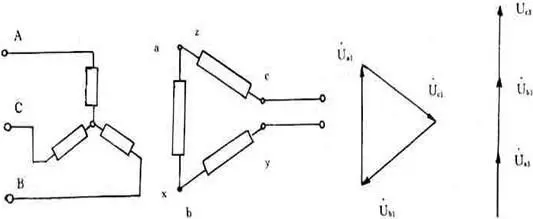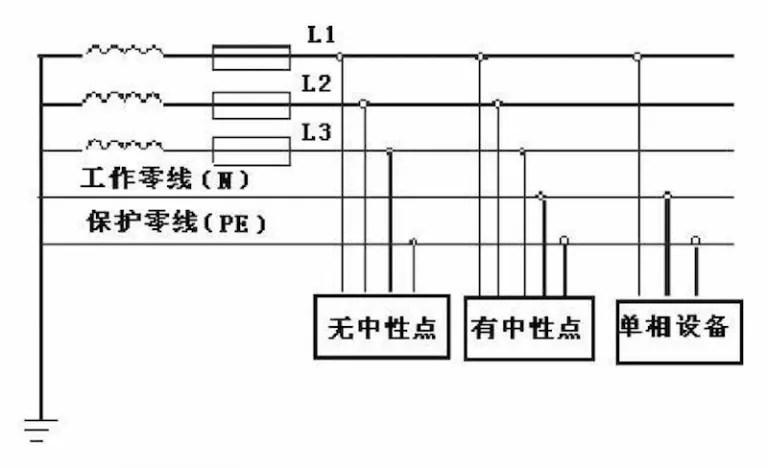ELECTRIC, WITH AN EDGE
If you want to have an energy-efficient home or business, a three-phase step-up transformer is an easy solution.
This sort of transformer has three phases in one unit to ensure it works well with any voltage.
Worry no more as this article describes how to use a 3-Phase Step-Up Transformer.
It will help you produce a highly efficient output power from a low voltage alternating current source.
Good thing, Daelim Company sells transformers of this kind.
Customers may choose from a wide range of transformers at the Daelim Company, who are in business for more than a decade.
You may find Daelim’s products in a wide range of industry sectors.
DAELIM is the brand to buy from if you seek a firm that can provide you with high-quality items and dependable service.
8+FAQ About the Voltage Transformer
-Due to high demand, the supply of voltage transformers has increased which is why DAELIM will help you decide if you should get one or not.
8+FAQ About the Three-phase Overhead Transformer
-FIND THE BEST THREE-PHASE OVERHEAD TRANSFORMER GUIDE ON THE WEB ALL IN ONE PLACE. SEE OUR LIST OF 8+FAQ RIGHT HERE.
The Complete Guide to a Generator Step-up Transformer
-Since a lot of consumers are interested in generator step-up transformers, this article teaches the generator step-up transformer specifications and generator step-up transformer configuration.
Step-Up Substation and Its Significance In Power Distribution
-Daelim provides in-depth analysis of the step-up substation. Read on and understand what is it about and its significance in power distribution!
A three-phase step-up transformer is a device that converts alternating current into direct current.
It can be used in many electrical systems, including lighting, motors, and power supplies.
The voltages and currents of a 3-phase transformer vary in phase-time.
Along with it, three single-phase transformers are connected to create a three-phase transformer bank.
It is then transformed into a three-phase power source.
Remember, the pre-built three-phase transformers are also an option.
Due to the widespread usage of three-phase power distribution, three-phase transformers are often used to reduce or increase the voltage the faster way.
Most electrical transports and distributions in the commercial industry make use of these transformers.
In addition to the previous statement, industries that employ three-phased equipment like large air conditioning or machinery, implement these transformers.
These kinds of transformers have several advantages:
Hence, three-phase transformers are critical components of contemporary electrical technology.
The transmission voltage is raised by using this sort of transformer, resulting in fewer power shortages. Increased voltage lowers cable resistance and reduces line current. 11kV is the typical voltage at which electricity is produced and transported, with higher voltages such as 22kV and 44kV.
So, a step-up transformer comes in handy in this scenario. The voltage is raised with the help of these transformers. The high voltage helps commence motor spinning and overcome the starting resistance. In addition, they are used to start electric motors.
It is important to note that step-up transformers with single-phase and three-phase are employed when incoming power voltage demands increase. Primary windings are made of thick, insulated copper due to the high primary current value.
The winding arrangement employed in a three-phase transformer also affects the voltage. The turns ratio of a three-phase transformer must be calculated to get the appropriate step-up voltage.
In the next section, we’ll talk about three-phase transformers with open-delta and open-star connections. To give you an important note, the phantom leg is the leg of the transformer that has no transformer attached to it.
Delta-delta transformers commonly come into play for mostly three-phase loads but may have a tiny single-phase component.
Lighting and low voltage electricity are common single-phase components with three-phase loads.
You may use a center tap on one of the delta secondary’s legs to feed the single-phase load.
The single-phase load is then connected to this grounded neutral via one of the phases on the grounded leg.
If one delta-delta bank’s single-phase transformers break, the two transformers remain to create an open delta configuration.
The bank’s kVA rating has decreased, but the load continues to get three-phase electricity.
When used with a star-star transformer, you may change the output voltage from three to one phase. You should spread the single-phase load throughout the three phases and neutral as equally as feasible.
In star-star transformers, third-harmonic currents and voltages may arise as known issues. These harmonics may lead to a wide range of power quality problems, including noise and hum.
When a three-wire system needs a neutral, the star–delta transformer comes in handy. The secondary may also operate as a load server.
The main windings of the stars are usually grounded. In a four-wire delta secondary, the fourth wire from a center tap on one of the delta’s legs is grounded.
The most common three-phase transformer connection is the delta–star. The secondary with a star connection distributes the single-phase load among the three phases to neutral. It will happen as opposed to a four-wire delta secondary having everything on a single winding.
If one of the delta–wye bank’s single-phase transformers breaks, the whole bank goes out of commission.
In addition, the delta–star transformer causes a 30° primary–secondary phase shift. Neither delta-delta nor star-star transformers (which do not create a phase shift) can compare.
Delta-star may show many fundamental principles about polyphase transformer functioning via examining the transformer. You may use either a current or voltage basis for the analysis. Voltage is a tough concept to grasp since it is vague. As a result, since current is simple to understand, it will be the starting point for examination.

The operation of three-phase transformers is the same, but the configuration varies. Three-phase transformers contain primary and secondary cores instead of primary and secondary windings. In the vast majority of commercial applications, engineers use the delta-star arrangement.
In this section, we provide a step-by-step guide on how to wire a three-phase step-up transformer.

You may use a variable frequency drive or phase converter to change single-phase electricity into three-phase electricity. Single-phase and three-phase transformers may be constructed to be connected to various phase combinations. For certain DC rectification transformers, you may use it with two-phase, six-phase, or even 24-phase systems.
A three-phase power source’s single-phase component may typically be connected to just one of the three phases. Besides, a three-phase transformer’s one leg is often utilized to supply a low-power single-phase load.
The voltage of a three-phase application may be increased or decreased as necessary. Three single-phase transformers can be combined in a manner that electrically acts as a three-phase transformer. As a result, it can now be compatible with a three-phase supply.
For this case, you must use a delta or star configuration for the three single-phase transformer primary windings for this to work.
The secondary windings will also work as a three-phase transformer taking three-phase power from the inverter. Then, it delivers this power to the output.
You can convert your three-phase step-up transformer 240 to 480 as needed.
These transformers must meet specific manufacturing requirements.
Take note; you can find these at electrical supply shops or on the internet.
If you have no experience using such equipment, it might be a bit overwhelming to use.
It would help if you had a competent expert assist you with installing, such as Daelim.
Three-phase power distributes three evenly spaced alternating currents via a single circuit.
The power supply is constant, so it doesn’t lose power during the one-third of a cycle. In addition, it’s one of the waves that reach the maximum voltage.
A three-phase circuit has a higher power density per unit of amperage than a one-phase circuit.
Therefore, the wiring is smaller, and the expenses are less.
Load balancing is a snap with three-phase electricity thanks to the reduced harmonic currents and lack of bulky neutral lines.
The use of electrical capacity is also optimized, resulting in better power efficiency.
Three-phase power supplies outperform single-phase power sources.
You can plug in a power supply and have three times the power of a single-phase unit.
Hence, one-phase power supplies need more conductor material, whereas three-phase power supplies use a lot less.
It is recommended, but not required.
However, three-phase HVAC systems are now the norm since they are more energy-efficient.
Many HVAC components include motors, rooftop units, ERV, power exhaust, and more.
Because electric motors are more efficient, three-phase systems are favored.
All power systems, including transmission and distribution ones, include three-phase transformers to some degree or another.
Any business that uses specialist three-phase equipment may use these transformers.
Three single-phase transformers supplying the same amount of electricity provide more compact alternatives.
In addition, these transformers provide electrical isolation between circuit sections. It increases safety while also allowing for a weight reduction.
For one thing, better electrical properties come with a balanced three-phase transformer.
Three-phase transformers are essential in all modern electrical systems because of this.
Daelim has been established for many years, and it’s seen that its transformers performance is top-notch.
The company produces high-performing products like three-phase step-up transformers for your business or industrial needs.
When you need to find more than just existing transformers, Daelim’s Transformer Service Center can help you design and produce distribution transformers that meet your unique needs.
We have our own factory and a professional team of engineers, which can design and modify application requirements that meet all your conditions.
Download Resource
ELECTRIC, WITH AN ENGE-- DAELIM BELEFIC